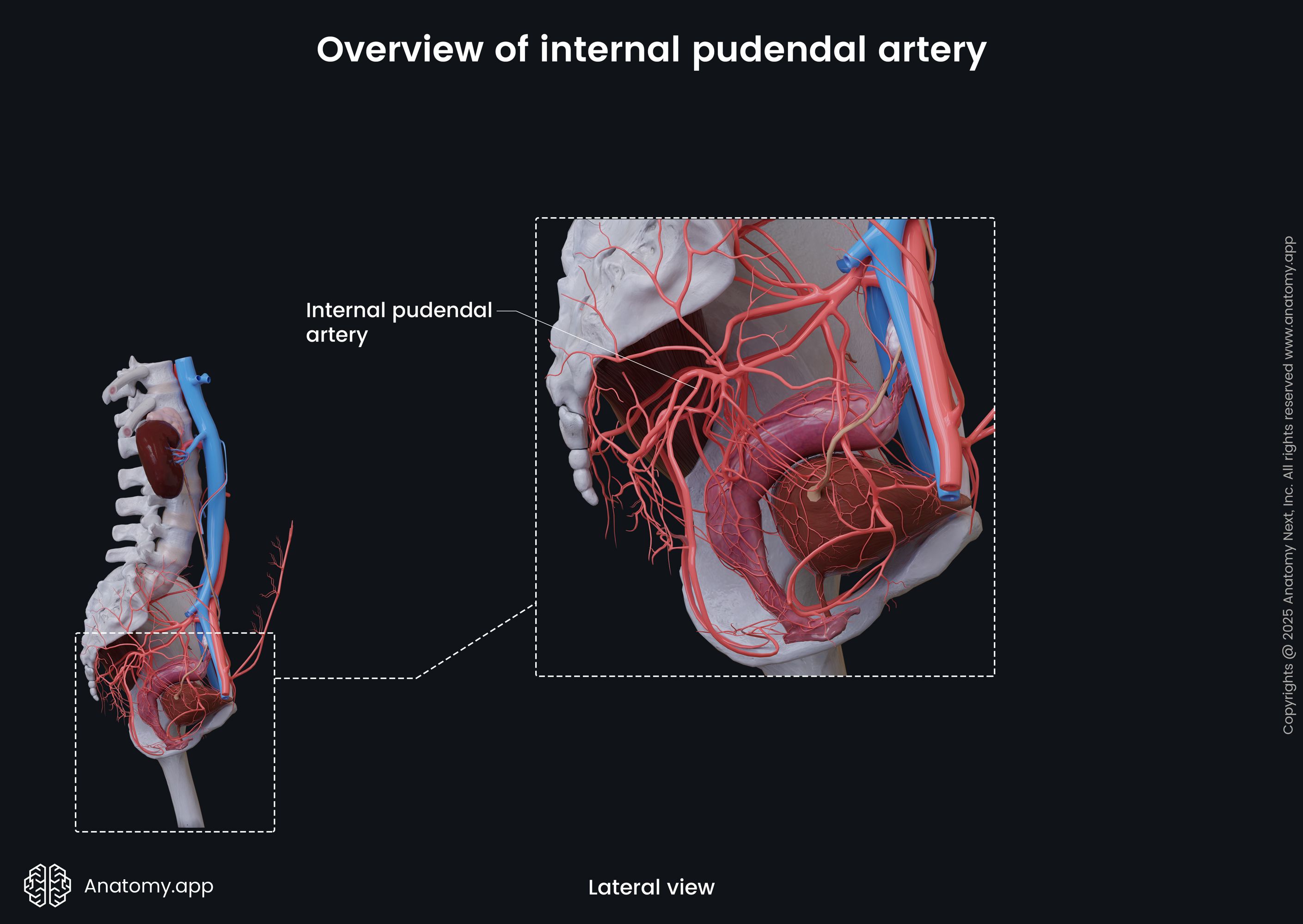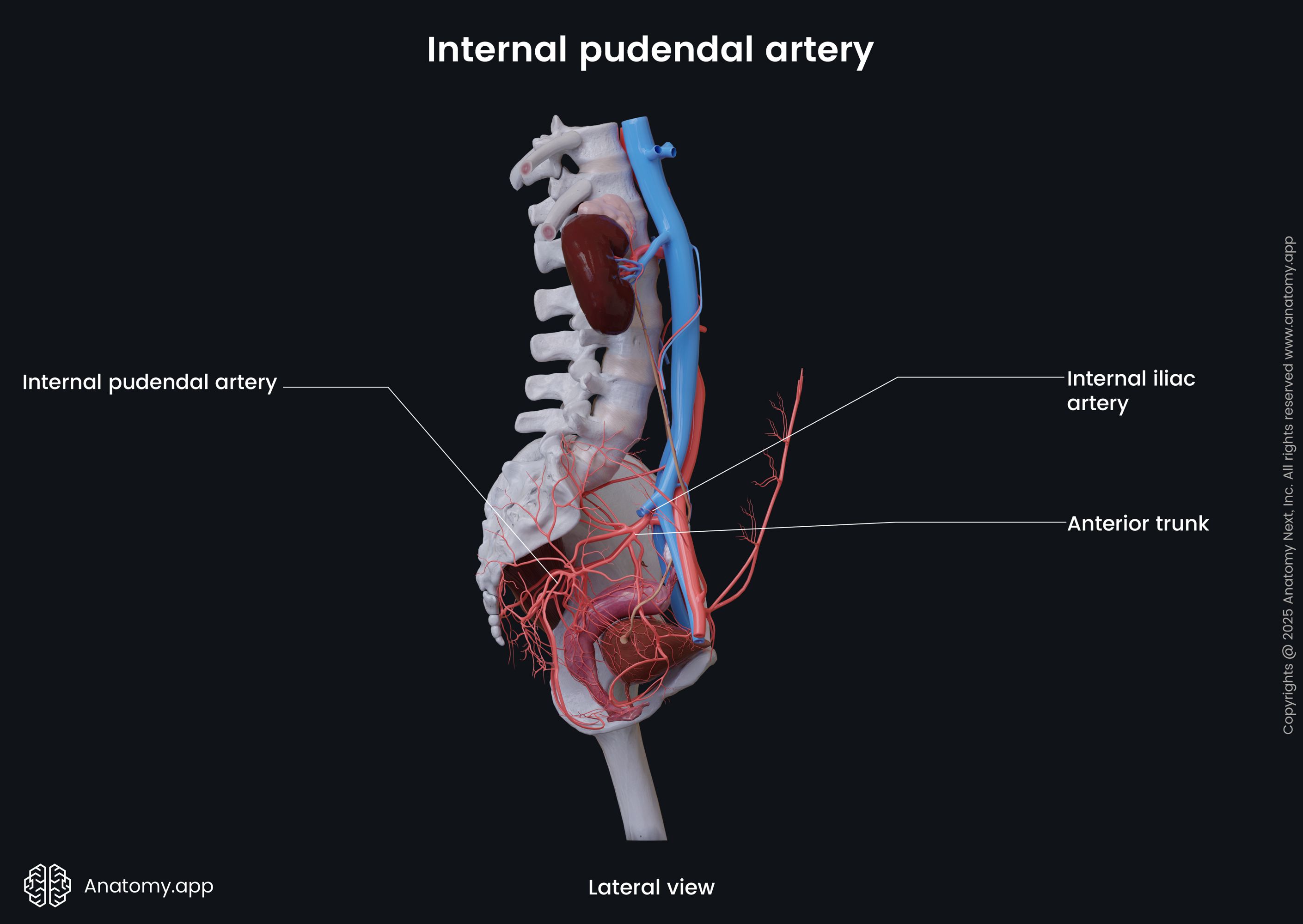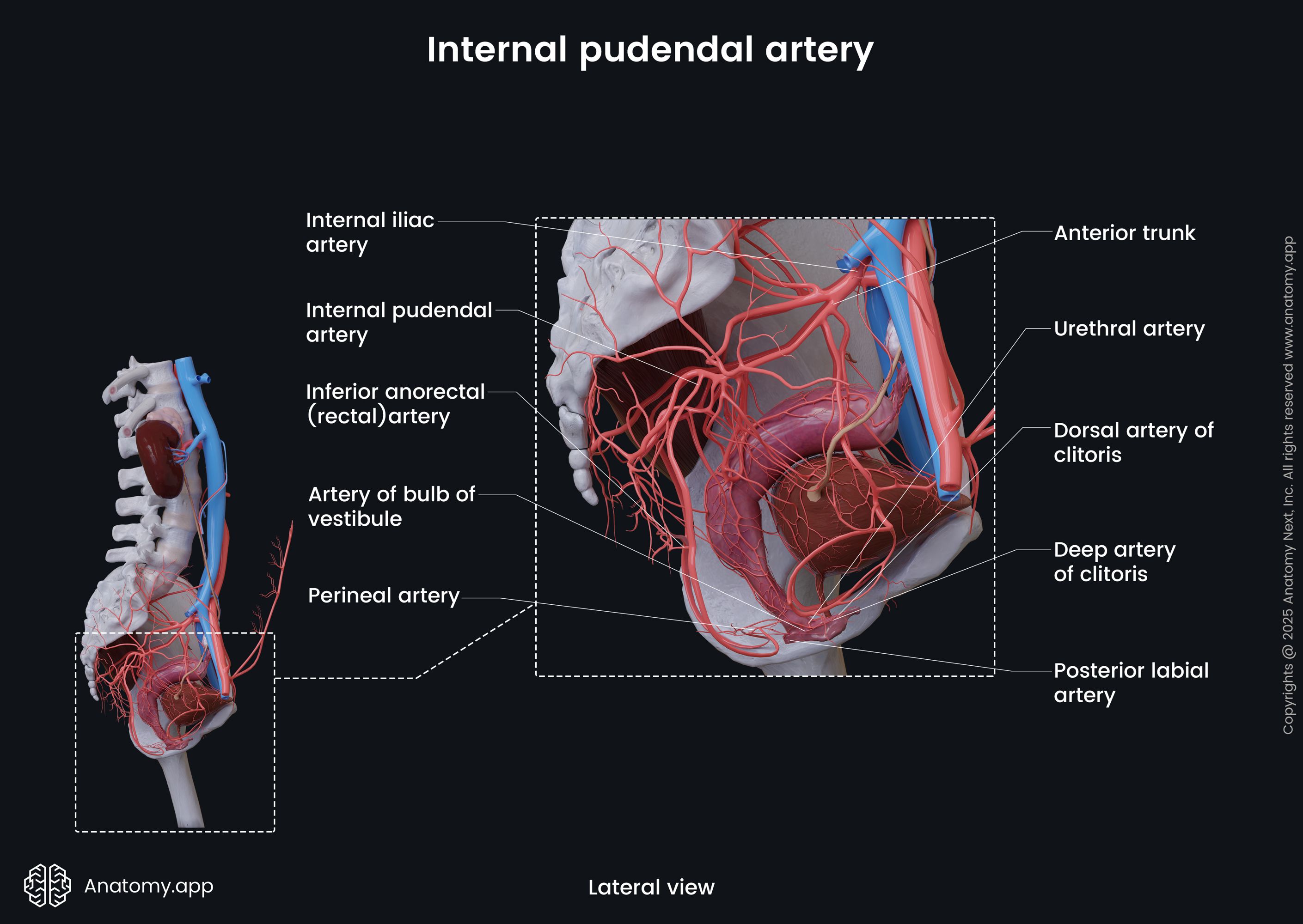- Anatomical terminology
- Skeletal system
- Joints
- Muscles
- Heart
- Blood vessels
- Blood vessels of systemic circulation
- Aorta
- Blood vessels of head and neck
- Blood vessels of upper limb
- Blood vessels of thorax
- Blood vessels of abdomen
- Blood vessels of pelvis and lower limb
- Arteries of pelvis and lower limb
- Veins of pelvis and lower limb
- Blood vessels of systemic circulation
- Lymphatic system
- Nervous system
- Respiratory system
- Digestive system
- Urinary system
- Female reproductive system
- Male reproductive system
- Endocrine glands
- Eye
- Ear
Internal pudendal artery
The internal pudendal artery (Latin: arteria pudenda interna) is a branch of the anterior trunk of the internal iliac artery. It supplies the lower part of the rectum, perineal muscles, urethra, as well as participates in supplying the scrotum and penis (in males), labia majora and vestibule of the vagina (in females).


The artery leaves the pelvic cavity via the infrapiriform foramen, then turns around the ischial spine and passes anteriorly along the lateral wall of the ischioanal fossa. On its course, the internal pudendal artery gives off the following branches to the corresponding structures:
- Inferior rectal artery - to the lower portion of the rectum;
- Perineal branches - to the perineum;
- Urethral artery - to the urethra;
- Penile bulb artery (for a male) - to the scrotum, bulb of the penis;
- Vestibular bulb artery (for a female) - to the labia majora and bulb of the vestibule.




